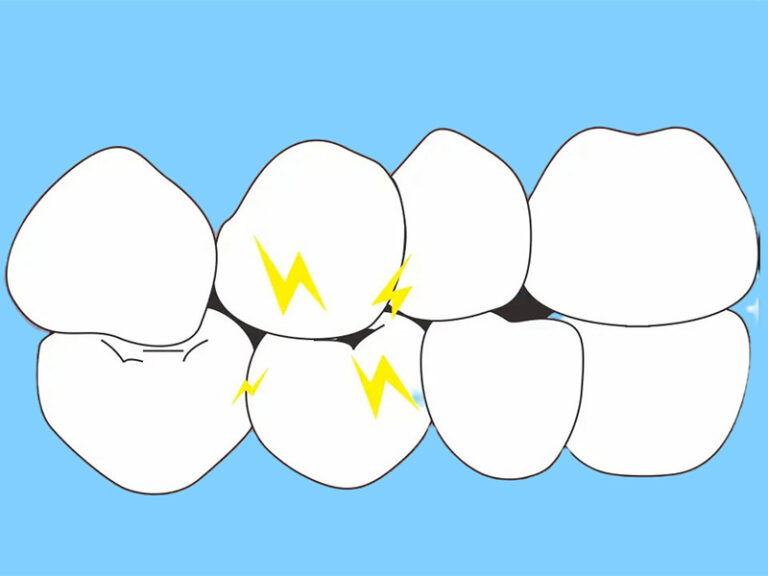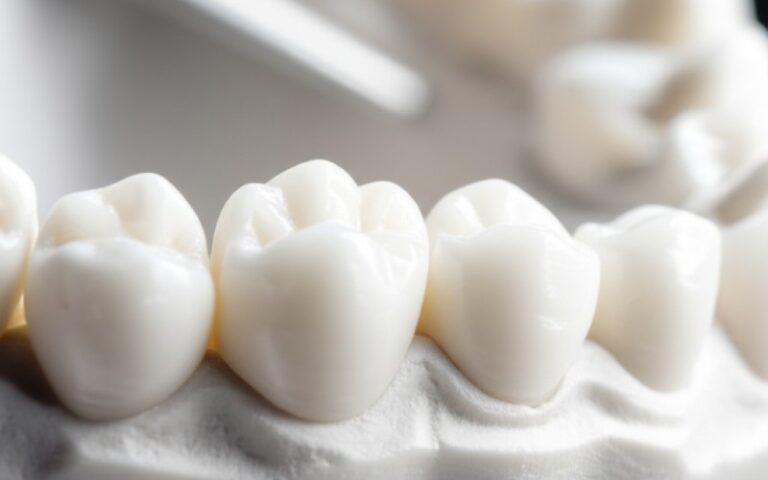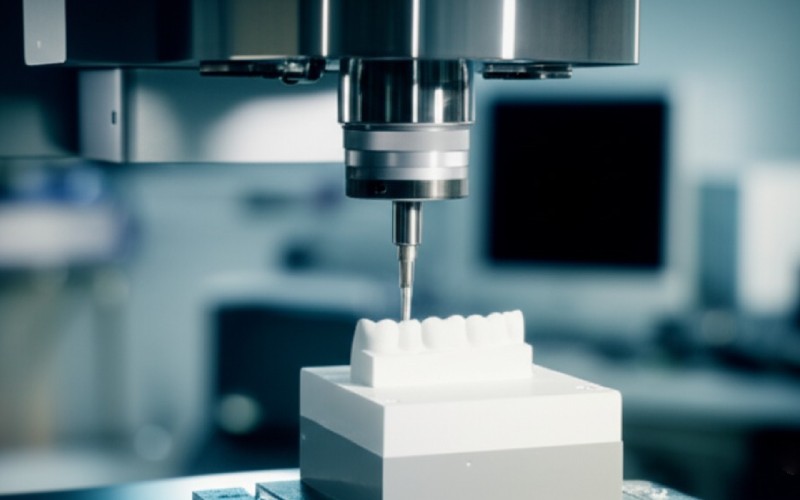
Zirconia Krone Problemer: Et Dybdegående Dyk Ned i Dental Retention og den Kliniske Ydeevne af Zirconia
The zirconia crown. Dentists love its strength, and patients often hear it’s the “best” option. But is it always? The truth is, even these super-strong fixed dental prostheses have problems. The biggest one I hear about is retention, or simply, the crown falling off. This article is for you if you have a zirconia crown, are thinking about getting one, or are a dental professional who wants to avoid common issues. I’ll walk you through what can go wrong and, more importantly, how to get it right.
Indholdsfortegnelse
What Is a Zirconia Crown, Really?
At its core, a Krone af zirkonia is a type of dental cap used to cover a damaged tooth or a dental implant. Think of it as a helmet for your tooth. It’s a type of ceramic crown, but it’s not like the delicate ceramic teacups you might imagine. This ceramic material is made from zirconium dioxide, a very strong and durable white powder. It’s so tough, in fact, that it’s used in other high-tech fields. In dentistry, this strength makes the zirconia crown a very popular choice for restoring a broken tooth.
The process involves a Dentallaboratorium taking a digital scan or impression of your tooth. They then use advanced dental technology to mill the zirconia crown from a solid block of the material. After milling, it is heated in a special oven to sinter, or harden, into its final, super-strong form. The goal of any dental restoration is to bring back the function and look of a natural tooth. A zirconia crown is one of the most common ways we do that today in modern dentistry. This dental prosthetics device has changed the game.
When we talk about fixed dental prostheses, we mean a restoration that is permanently attached in your mouth. A zirconia crown is a great example. Unlike dentures, you don’t take it out. It becomes a part of your smile. The biocompatibility of zirconia is also excellent. This means it’s very rare for the body to have a bad reaction to it. This makes it a safe and reliable option for almost any patient needing a dental crown. A zirconia crown can protect a weak tooth from more damage.
Why Does the Type of Zirconia Matter So Much?
Not all zirconia is created equal. This is a key point that many people miss. Dentists often bring up the different zirconia formulations. The specific type of zirconia used for your zirconia crown has a huge impact on both its strength and its looks, or aesthetics. There are generally two main categories. First, there’s solid or monolithic zirconia crowns. These are made from one solid block and are incredibly strong. They are perfect for posterior crowns, which are the molars in the back of your mouth that do all the heavy chewing. Their strength helps prevent a fracture.
The second category is high-translucency or layered zirconia. These zirconia crowns are designed to look more like a natural tooth. The material has better translucency, meaning light can pass through it. This makes them a better choice for an anterior tooth, or the front teeth that everyone sees when you smile. Sometimes, a dentist will use a solid zirconia base and layer it with more aesthetic porcelain. The downside is that this layered zirconia type is not quite as strong as the solid version. The choice of which zirconia materials to use is a critical decision in your dental care.
Understanding this difference is important for managing expectations. If you need a restoration on a back tooth, your dentist will likely choose a tougher, more opaque zirconia crown. For a front tooth, the focus will be on aesthetics, so a different type of zirconia will be used. Both are excellent materials, but they are used for different jobs. The success of the dental restoration depends on picking the right material for the right tooth.
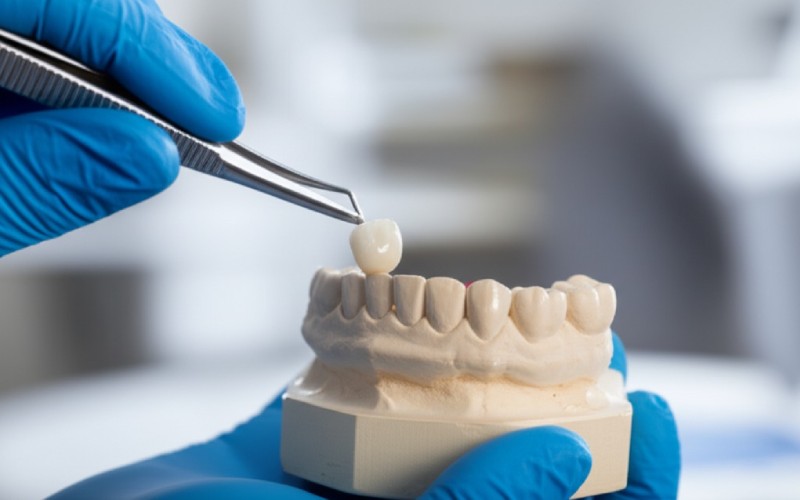
What Is the Number One Problem with a Zirconia Crown? Let’s Talk Retention.
Here it is, the big one. The most common complaint about a zirconia crown is loss of retention. In simple terms, the crown may fall off. This can be frustrating and scary for a patient. Why does this happen? The reason is often the very smooth surface of some zirconia crowns. Traditional ceramic crowns could be etched with acid to create a rough surface. This roughness gave the dental cement something to grip onto, creating a strong bond.
Early zirconia crowns, however, could not be etched in the same way. Their surface was slick, which made it hard for the cement to hold on tight. This is the root cause of many retention problems. The bond between the zirconia crown and the tooth was not a chemical bond, but more of a mechanical one. If the tooth preparation wasn’t perfect, there was not enough friction to hold the zirconia crown in place. This led to a higher rate of loss of retention compared to other types of crowns.
Thankfully, dental science has improved. Newer techniques and special primers can now be used to treat the inside of a zirconia crown before cementation. This helps create a much stronger bond with the cement. However, the risk of loss of retention is still a major concern that dental professionals must manage carefully. Proper technique is everything. Without it, even the strongest zirconia crown is not secure on the tooth. Crown retention is a team effort between the material and the dentist’s skill.
How Does Poor Tooth Preparation Cause a Zirconia Crown to Fail?
You can have the best zirconia crown in the world, made by a top dental lab, but if the foundation isn’t right, it will fail. That foundation is the tooth preparation. Before a zirconia crown can be placed, the dentist must shape the natural tooth. This shaping is one of the most important steps in the entire dental procedure. The goal is to create enough space for the crown material while also creating a shape that helps hold the crown on.
For a zirconia crown, the tooth preparation needs to have nearly parallel walls and enough height. This creates a natural friction grip, which is a big part of retention. If the tooth is shaped too much like a cone, the zirconia crown can just slide off. This is what we call inadequate tooth preparation. Another key part is the margin, which is the edge where the zirconia crown meets the tooth. If the crown margins are not perfectly smooth and clear, the crown will not seat properly. This can leave a gap where bacteria and food can get in, leading to caries or decay under the crown.
The success of any dental restoration starts with the prep. The occlusal or biting surface also needs to be shaped correctly to give the zirconia crown enough thickness. If it’s too thin, it can lead to a fracture. A good dentist knows that a successful zirconia-based crowns outcome depends heavily on their work before the crown is even made. The preparation of the tooth is just as important as the zirconia crown itself.
Can a “Perfect” Zirconia Crown Fracture or Break?
Yes, it can. While it’s rare, a zirconia crown can suffer a fracture. Zirconia is known for its amazing flexural strength, which is a measure of how much it can bend before it breaks. It is much stronger than porcelain or other ceramic materials. This is why it’s so popular for posterior crowns. However, no material is indestructible. A fracture can happen for a few reasons. One is a problem during the making of the crown. If there are tiny flaws inside the material, they can lead to crack propagation, where a small crack grows over time until the crown breaks.
Another cause of fracture is an uneven bite. If your occlusal bite puts too much force on one tiny spot of the zirconia crown, that pressure can be enough to cause a fracture. This is why your dentist will carefully check your bite after they seat the new crown. They will have you bite on a special paper to see where the high spots are and will smooth them down. This ensures the biting forces are spread out evenly across the zirconia crown and the other teeth.
Finally, while monolithic zirconia crowns are very tough, layered zirconia can sometimes have issues with the top ceramic layer chipping. These are called ceramic fractures. The zirconia base underneath is usually fine, but the prettier layer on top can chip away. While the durability of a zirconia crown is one of its biggest selling points, it’s important to know that a fracture is still possible. Following your dentist’s advice on caring for your dental restoration is key.
Are There Aesthetic Problems with a Zirconia Crown?
When zirconia crowns first came out, their biggest problem was aesthetics. They were very strong, but they were also very white and opaque. They didn’t look much like a natural tooth. They lacked the life-like translucency of a real tooth or even older all-ceramic crowns. This was a major issue, especially for a restoration on a front tooth. In the field of dentistry, how a restoration looks is often just as important as how strong it is.
Over the years, dental companies have worked hard to fix this. They created new zirconia formulas that are much more translucent and come in more shades. These newer zirconia crowns can look fantastic and blend in beautifully with your other teeth. However, there can still be a trade-off. Generally, the better a zirconia crown looks, the less strong it is. The most beautiful, translucent zirconia isn’t as tough as the opaque, solid kind used for posterior teeth.
So, are there still aesthetic problems? Sometimes. Achieving a perfect match with the other teeth can still be a challenge. It takes a skilled dentist and a great dental lab working together. For the most demanding aesthetics cases, especially for a single front tooth, some dentists might still prefer other types of ceramic materials. But for most situations, modern zirconia crowns could provide a great balance of strength and beauty for your dental restoration.
What Is the Crucial Role of Cement in Zirconia Crown Retention?
The cement is the unsung hero of any successful dental crown. You can have a perfect zirconia crown and a perfect tooth preparation, but if you use the wrong cement or use it incorrectly, the crown will fail. The cement is the glue that holds the whole dental restoration together. For zirconia restorations, choosing the right cement and using the right cementation technique is everything.
Because of the retention issues I mentioned earlier, we can’t just use any old cement. Dental science has given us special cement types designed for zirconia-based crowns. One of the most popular is resin cement. A resin cement can create a very strong chemical bond to both the tooth and the specially prepared inside surface of the zirconia crown. This creates a much more secure fit than just relying on friction. This type of cement is often the top choice for holding a zirconia crown in place.
Other options include resin-modified glass ionomer cements, sometimes known by brand names like Ketac. These are also effective and can be easier for a dentist to use. The key is that the cementation process must be done perfectly. The inside of the zirconia crown must be cleaned and treated, and the tooth must be clean and dry. Any mistake in this process can weaken the bond and lead to the zirconia crown coming loose later. The success of any dental restoration depends on this critical step.
How Does a Zirconia Crown Affect the Opposing Tooth?
This is an interesting clinical question. We know a zirconia crown is super strong. But what happens to the natural tooth that it bites against all day? This is a valid concern in dentistry. Early studies on the first types of zirconia showed that it could be abrasive and wear down the enamel of the opposing tooth. The hard zirconia ceramic was tougher than natural tooth enamel.
However, this is another area where dental materials have gotten much better. The key factor isn’t just the hardness of the zirconia crown, but how smooth its surface is. A highly polished zirconia crown is actually very kind to the opposing tooth. If the occlusal surface of the crown is polished to a mirror-like finish by the dental lab and your dentist, it will cause very little wear. In fact, some studies show that a polished zirconia crown causes less wear than some older types of dental ceramic like porcelain.
So, the risk is real, but it is manageable. It is up to the dental team to make sure the zirconia crown is properly polished. After cementing the zirconia crown, if your dentist has to adjust your bite, they must re-polish the area they adjusted. This simple step protects the health of your other teeth and is a sign of a quality dental practice. The goal is to restore one tooth without causing problems for any others.
What Does a Clinical Trial Tell Us About the Success Rate of Zirconia Crowns?
Anecdotes from a dentist are great, but the real truth is in the numbers. The good news is that the overall clinical performance of zirconia is excellent. Many studies, including a systematic review of the survival rates, show that zirconia crowns have a very high success rate over many years. The survival rate for zirconia is often 95% or higher after 5 years.
These studies, like a prospective clinical study that follows patients over time, look at survival and complication rates. They track things like fracture, loss of retention, and secondary caries. For zirconia single crowns, especially those on a natural tooth (not an implant), the results are very strong. Some research, like one study on crowns performed in a private practice, found no statistically significant difference in failure rates between zirconia crowns and traditional porcelain-fused-to-metal crowns. The evaluation of zirconia in these trials consistently supports its use.
However, these reports also highlight the problems we’ve talked about. The most common technical complication is, you guessed it, loss of retention. The second is the chipping of the veneer on layered zirconia types. A clinical trial often finds that technical and biological complications are most often related to improper technique, not a flaw in the zirconia contains. This tells us that when done right, a zirconia crown is one of the most reliable dental restorations available for fixed dental prostheses. These follow-up studies are very reassuring.
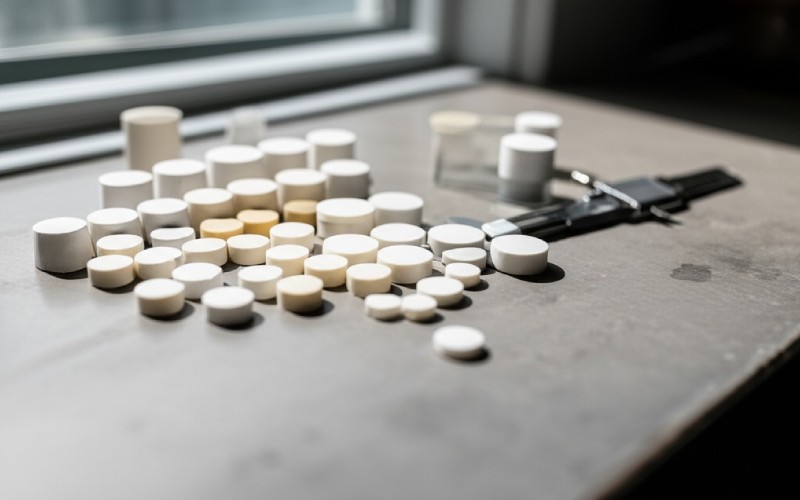
How Can You Get the Best Results from Your Dental Restoration?
So, how do you make sure your zirconia crown experience is a good one? It comes down to a partnership. First, communicate with your dental provider. Ask them what type of zirconia they plan to use and why. A good dentist will be happy to explain their choice. Second, focus on your oral hygiene. A zirconia crown can’t get a cavity, but the tooth underneath it can. The margin where the crown meets the tooth is a place where plaque can build up. Brushing and flossing are still very important for your oral health.
Third, understand that the skill of the team matters. The dentist doing the tooth preparation and the dental lab fabricating the crowns fabricated for you are key players. An experienced team will know how to manage all the little details, from the proper crown fit to the final polishing of the occlusal surface. This helps ensure good long-term results for your dental work.
Finally, be a good patient. Go to your regular check-ups. If your bite feels “high” or “off” after getting a zirconia crown, tell your dentist right away. Don’t wait. A small adjustment can prevent a big problem like a fracture or muscle pain. Taking these simple steps will give your zirconia crown the best possible chance to last for a very, very long time and serve your dental health well.
Key Takeaways to Remember:
- Zirconia crowns are very strong and durable, but they are not perfect.
- The biggest problem is loss of retention, or the crown falling off, often due to a poor bond with the cement.
- The type of zirconia matters. Stronger, solid zirconia is for back teeth, while prettier, translucent zirconia is for front teeth.
- The skill of the dentist in preparing the tooth is critical for success.
- Proper cementation with the right kind of resin cement is essential to prevent the crown from coming loose.
- A polished zirconia crown is kind to the opposing tooth, but an unpolished one can cause wear.
- Clinical studies show very high survival rates for zirconia crowns when all the steps are done correctly.

